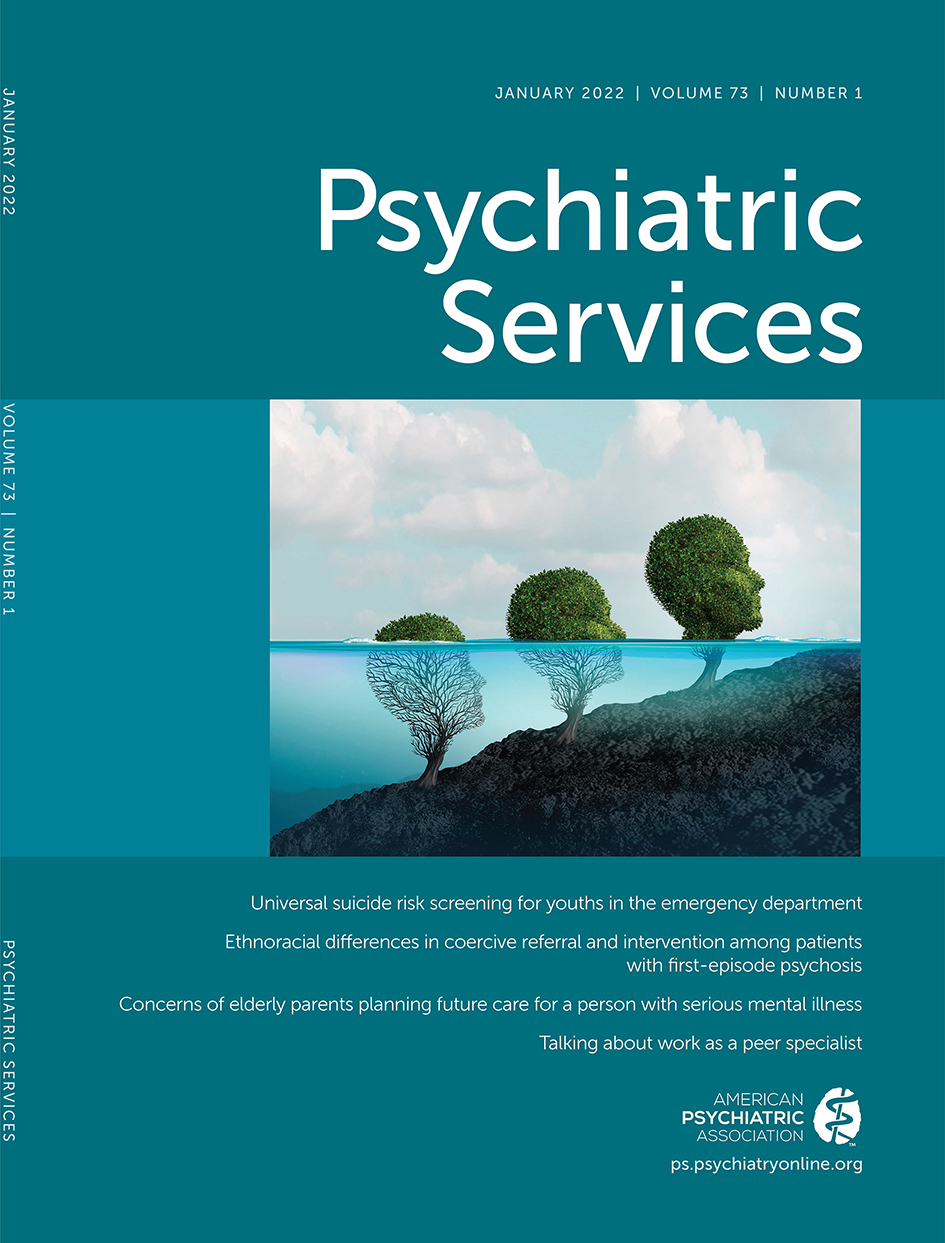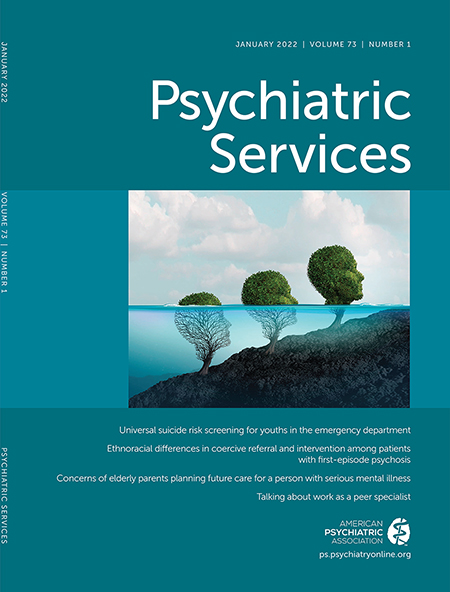While Americans continue to grapple with the pervasive nature of racism in U.S. society, as health care providers, we may be quick to point fingers at the correctional and policing systems without fully recognizing our own roles in perpetuating structural violence (
1). Our seemingly progressive medical centers are not immune to the effects of White privilege, which are often subtly but deeply ingrained in our histories. Racism and White supremacy act as dynamic and entrenched structures within our organizations. These problems are not amendable to simple “diversity and inclusion” education programs that target individuals as the unit of intervention (
2). As the quality improvement pioneer W. Edward Deming observed, “A bad system will beat a good person every time.” The difficulty is that many of the troubling elements in our health care system that cause racial trauma and stress among persons belonging to minority groups are insidious and often ostensibly justifiable.
The use of restraints in the care of patients who experience a behavioral crisis is a prime example of how unexamined therapeutic interventions can do irrevocable harm and perpetuate disparities. A 2019 systematic review from the University of Geneva found an incidence of posttraumatic stress disorder of 25%–47% after a restraint across studies (
3). Importantly, the effect of involuntary treatment was not homogenous, with less forceful interventions such as seclusion being less harmful (
3). It appears that the iatrogenic trauma from treatment in our facilities can sometimes outweigh the benefits provided by our medications or the “safety and containment” of a locked inpatient unit (
4). This is especially true for individuals who find themselves at the intersection of minority racial-ethnic identities and stigmatized mental health labels as part of their lived experiences.
Our own institution’s psychiatry department has recently launched several quality improvement initiatives to identify and address inequities in the use of involuntary interventions. Our findings show that the now well-documented disproportionate use of force against people of color in the community (
5) is also mirrored in our emergency departments (EDs) (
6) and on our psychiatric units (study forthcoming). When we examined nearly 200,000 ED visits and 4,000 inpatient stays, we found elevated restraint rates for racial minority groups that persisted after adjusting for a host of confounding variables with odds ratios in the 1.2–1.8 range (
6). Involuntary treatment thus heightens, crystallizes, and concentrates injustice against people from disenfranchised backgrounds within our institutions, just as the use of excessive force by the police does outside of them (
7).
When presented with such findings, many health care providers struggle to understand how we find ourselves unwitting participants in a racist system despite our own vehement denials of being racist individuals (
8). We find it easier to label other departments or specialties as the source of this problem without recognizing that no single element of the health care system bears sole responsibility. Psychiatrists and other physicians frequently work hand in hand with the correctional and policing systems, given that a shared feature of our practices is the prediction of dangerousness and the mitigation of that risk. Our professions are endowed with local legal authority, and even some police powers, through the involuntary civil commitment system and the sanctioned use of restraints within the walls of our facilities. Despite these responsibilities, some hospitals have ceded authority over the management of psychiatric agitation (a medical condition) to security departments, which have gradually become more militarized in the setting of heightened media attention to instances of violence targeting health care workers (
9–
11). The overlap between external police forces, internal security departments, and health care providers can take many forms, from police entering health care facilities to assist with restraints (as is increasingly common in states like Vermont) (
10) to some hospital security officers serving in a dual role as sworn city police officers (as is the case at our institution). The assumption that police and security services can act as therapeutic agents in deescalation is itself grounded in a privileged White framework where they are viewed as protectors. For people of color, and Black people in particular, the presence of these agents can instead increase fear, anxiety, and mistrust, which promotes agitation rather than calm.
Working in partnership with health care providers, security personnel at some institutions even have independent authority to use police weaponry, including tasers (“stun guns”) and pepper spray (aerosolized oleoresin capsicum chemical weapons), as part of the force continuum available during a restraint (
10,
11). Despite being used on patients who often have a mental illness and no legal charges, these acts of institutionally sanctioned violence are rarely systematically recorded, comprehensively investigated, or subject to physician oversight in the way that a typical medical or behavioral restraint is regulated. At our own institution, with a supportive administration and a responsive and sophisticated police and security department that collaborates with readily available mental health professionals, we still are aware of several instances in recent years in which pepper spray was used on patients. Rather than viewing these events as isolated actions, we should instead see them as sentinel events that reveal structural failures, beginning long before the decision to discharge a weapon is reached.
In 2018, the American Psychiatric Association issued a position statement unequivocally asserting that police weaponry designed for the community has no place in the clinical management of agitation within the hospital setting and that facilities should instead rely on sufficient clinical staffing and training to provide alternative means of evidence-based deescalation (
12). This position has also been articulated in the past by the Centers for Medicare and Medicaid Services (CMS) and was recently reaffirmed in its most recent State Operations Manual guidelines for hospitals (
13). Alternative models have been developed that use evidence-based interventions, including psychiatric emergency response teams; changes in facility architecture; expansions of the therapeutic milieu; increased staff-to-patient ratios; implementation of a recovery-based approach, including the use of peer specialists; and ongoing staff education and community engagement programs (
14,
15). Our institution has incorporated regular “bias at the bedside” training, debriefings about the role of racial bias in restraints, and collaborative meetings between health care providers and security (i.e., Strategic Management Assessment and Response Teams [SMARTs]) to discuss complex cases. Unfortunately, it often takes significant tragedies before organizations are willing to organize and invest in these efforts (
11).
Position statements from professional societies and editorials from well-intentioned advocates are insufficient tools for curbing the expression of institutional power. There are, however, practical steps that regulatory agencies, hospital quality improvement officers, and all members of the treatment team can take to effect rapid structural change. First, active surveillance and monitoring on the use of coercive measures in hospitals should include racial data on those affected and be required to be collected and reported at the institutional and state levels. Too often, structural racism is seemingly invisible to the majority; we cannot change what we cannot measure and choose not to see. Second, it should be the responsibility of the Joint Commission, CMS, and state departments of public and mental health to enforce an immediate ban on the use of certain weapons against unarmed patients within our houses of healing. There is precedent for CMS threatening to withhold reimbursement from hospitals that fail to comply with these recommendations, as happened to the Martin Luther King Jr./Drew Medical Center in Los Angeles in 2004 (
16). These interventions have not passed through the rigorous U.S. Food and Drug Administration approval process, and, although termed “nonlethal,” the use of nonclinical weaponry has been clearly associated with adverse outcomes, including death (
17,
18). Previous work has also noted significant financial conflicts of interest in the research literature on tasers (
19). Third, all members of the treatment team can serve as allies and “upstanders” by speaking out when institutions fail to abide by these regulations.
Finally, we clinicians need to critically reflect on our own medication “armamentarium” given that systems of oppression are dynamic and able to reinvent themselves. Further escalation in the strength of our psychopharmacologic approaches to agitation mirrors the militarization of the police force in the late 20th century. Our clinical goal in these settings shifts from the treatment of illness to establishing control, and this feels frighteningly similar to the earlier promotion of antipsychotic medications as a road to “cooperation” (
20). Jonathan Metzl’s pioneering historical analysis of antipsychotic drug advertisements well describes the dehumanizing and thinly veiled racist themes underlying this approach (
20). These biases persist into the modern day, as illustrated by an editorial published in the
Annals of Emergency Medicine in 2016: “There is ample precedent for taking down beasts in the wild with ketamine. Remember those nature shows in which biologists shoot tranquilizer darts into rhinos or lions or polar bears? ... So why not treat people—when the situation requires it—like wild beasts?” (
21).
As the debate within the United States rages about reforming, defunding, or abolishing its militarized police force, it should be seen as a great failure of our profession that despite all our resources and training, we shift away from our core clinical values and instead accept paradigms of power and control over people with mental illness. As psychiatrists, we work with patients and in settings where agitation is common, and we know the experience of feeling acutely vulnerable. The presence of authority figures experienced by us as protective and prepared to take action on our behalf is comforting, but it is also at odds with what brought us to this work. Our conversations about hospital safety too often devolve into an “us versus them” paradigm that is based on the assumption that staff assaults and patient restraints are inherently inversely related. We believe there are different ways to establish safe clinical environments that eschew violence against all individuals. Identifying the systems and processes to get us there is the urgent challenge ahead.

